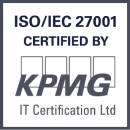We all know the eye-watering statistics about money laundering. Criminals launder €2-4tn every year. 70-80% of this “dirty” money goes through legitimate banking structures. Europol estimates that less than 2% of this criminal cash is successfully intercepted.
Governments are keenly aware of the problems, and regulators are moving to legislate against money laundering – but it’s all happening too slowly. Today, it’s the business community that can really drive better cooperation in financial crime compliance – to stop criminals, to coordinate sanctions against warmongers – and fast enough to have real-world impact for those directly afflicted by crime or war.
Which is why Salv, in collaboration with leaders from Estonia’s banking community, initiated the Salv Bridge Estonia pilot.
What is Salv Bridge?
Salv Bridge is a collaborative crime-fighting network that connects the data points across banks and fintechs and distils financial data into powerful insights. With the help of Salv Bridge, financial institutions can exchange and enrich data on suspicious activities and tackle financial crime risks, while reducing operational costs and driving efficiency. It is encrypted and fully-compliant with the latest data protection regulations.
Salv Bridge network is constantly growing and now includes investigators, compliance officers and compliance leaders across multiple institutions and jurisdictions.
Salv Bridge: Estonia pilot outcomes
Over a nine month period (Jul ‘21-Mar ‘22), ten Estonian banks representing 99% of the domestic market initiated over 1400+ collaborative investigations under the supervision of Estonia’s Financial Supervision and Resolution Authority (FSA), Data Protection Inspectorate (DPI), and Financial Intelligence Unit (FIU), facilitated by the Salv Bridge network.
The investigations – across three use cases: fraud, AML and sanctions – are estimated to have prevented €3m of customers’ money from reaching criminal-controlled accounts, stopping APP fraud and common scams (investment, romance, BEC/CEO impersonation etc), as well as reducing major time-delays in both sanctions and AML cases.
Collaborative investigations have been conducted at great speed. One-in-four urgent requests via the Salv Bridge network are being responded to in less than five minutes, with 75% of urgent collaborative investigations receiving responses in under an hour – a major improvement on the 24-48hr delays common across the industry.
As Europol’s 2021 Serious and Organised Crime Threat Assessment report details, major criminal organisations operate across borders, across legal jurisdictions, and in sophisticated networks of highly-specialised professionals. As Salv has discovered: it takes a network to beat a network. Our work against money laundering and financial crime is far from finished – it’s only the tip of the iceberg.
Salv Bridge brought significant improvements in addressing fraud and scam cases, anti-money laundering cases, and sanctions violations cases:
Fraud and scam cases
In fraud and scam cases a rapid response time can be the difference between successfully preventing funds from reaching criminals – as Swedbank’s Head of AML, Raul Vahtra, told Salv: “With instant payments and the rise of phishing attacks it really becomes a question of reacting within minutes – and I can say that thanks to this system, across the past three months we’ve been able to stop at least 70 such cases, successfully freezing the money and returning this to customers.”
Anti-money laundering cases
For anti-money laundering cases, Salv Bridge has had a major impact in improving the quality of Suspicious Activity Reports (SARs) filed by banks to the Estonian FIU. In Estonia, banks file over 11,000 SARs reports per year, but due to incomplete information, the amount of investigations that the FIU can successfully resolve is significantly lower than this. By reducing tedious back-and-forth between the FIU and banks resolving information gaps, Salv Bridge is contributing significantly to more effective intelligence investigations and prosecutions.
Sanctions violations cases
Regarding sanctions, Salv Bridge has seen a massive spike in banks initiating collaborative investigations since Russia’s invasion of Ukraine. Two clear use cases are emerging here – firstly, B2B correspondence is dramatically reducing time lost clearing name-match false positives (which can often represent over 95% of sanctions alerts), which would otherwise require hassling customers for additional information. And secondly, with sanctions lists evolving on a near-daily basis, Salv Bridge enables banks to better map potential politically exposed persons (PEPs) or relatives & close associates (RCAs) of sanctioned individuals – reducing financial institutions’ future exposure to potential fines or reputational damage.
Salv Bridge: privacy and data protection
Since the enactment of the EU’s General Data Protection Regulation (GDPR) there is a clear, consistent legal basis for private-to-private fincrime intelligence sharing across the 27 member states and the UK. The precise scope as to what data, and in which instances it can be exchanged, will often be determined by nation-level AML/CTF legislation, but providing network members adhere to data-minimisation practices, and ensure that the data exchanged accords with principles of necessity and proportionality, then Salv Bridge is legal across Europe (and potentially beyond).
In early 2023, the European Parliament has proposed the creation of a new authority responsible for reducing divergences in national legislation and supervisory practices, with provisions to enable information sharing across 27 member states as early as next year. The proposed legislation provides a clear direction in information sharing and strengthens the basis for collaborative crime-fighting in the EU.
“Historically private companies have been a little tentative with us, but this project helped change that. It gave the private sector confidence to work together closely with the Data Protection Inspectorate.” – Pille Lehis, Data Protection Inspectorate, Director General
Data minimisation is hard-wired into Salv Bridge via specific use case templates that determine the parameters around which data is shared and why, limiting information exchange (i.e. data such as date of birth, account number, transaction ID etc) to only that which is necessary to identify the customer or transaction in question. This is critical to warding against financial exclusion for individuals, and dramatically reduces risks relating to potential breaches of personally identifiable information (PII).
Salv Bridge: the future ahead
The Salv Bridge Estonia pilot was originally conceived as a 6-9 month project to test the fundamental feasibility of fincrime intelligence sharing – using real customer data, and demonstrating real-world crime-fighting impact.
Buoyed by the overwhelming success of the first 6-9 months, all ten Estonian banks have agreed to extend their participation in the Salv Bridge network, with participants from outside Estonia already applying to join an extended, pan-European Salv Bridge network.
A number of non-bank members have been successfully integrated into the network – including fintechs, payment service providers (PSPs), and money service businesses (MSBs), across the Baltics and in the UK.
If you want to access our cross-European financial collaboration and investigation network, you can join the waitlist here.




